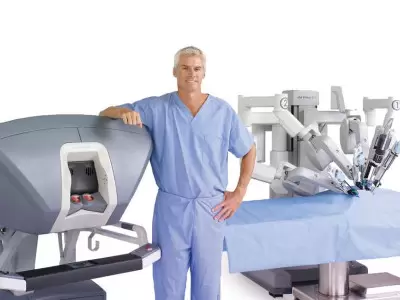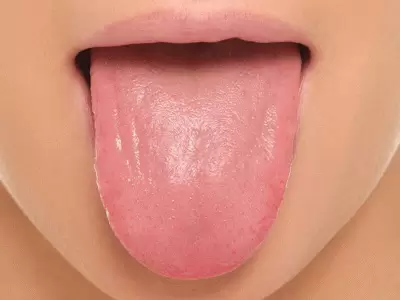Tonsillectomy and Adenoidectomy
The decision for surgery directed to tonsils and adenoids may be given in different situations. SITUATIONS THAT REQUIRE TONSILLECTOMY
Recurrent acute tonsillitis (more than five attacks in a year or more than three attacks in two successive years)
Concurrently with recurrent tonsillitis
Diseases of the heart valve
Feverish convulsions
Conditions that does not respond to treatment in chronic tonsillitis like
Foul breath
Resistant throat ache
Painful enlargement of the lymph nodes in the neck
Infection carrying that does not respond to medical treatment
Development of abscess around the tonsils
Obstructive growth in the throat
Snoring and chronic mouth breathing
Obstructive sleep apnea syndrome
With enlargement of adenoids and tonsils
Hypertension disease of the lungs – Cor pulmonale
Difficulty in easting
Speech disorders
Growth retardation
Occlusion disorder
Developmental disorders in facial bones (craniofacial
Tumor (malignancy) suspect (asymmetrical growth)
SITUATIONAS THAT REQUIRE (ADENOIDECTOMY)
Reasons related to infection;
History of adenoid infection that require antibiotic medication more then 5 times a year
Adenoid inflammation resistant to treatment (adenoiditis)
Middle ear diseases (With adenoid hypertrophy or without a distinct growth)
Fluid accumulation in the middle ear that does not respond to treatment (Chronic otitis media with effusion)
Frequent otitis media
Patients having a hole in the eardrum and with continuous discharge
Chronic sinusitis that does not respond to treatment
Reasons related to obstruction;
Excessive snoring and continuous mouth respiration during sleep
Obstructive apnea syndrome
With adenoid hypertrophy
Chronic lung disease, growth retardation, speech disorder
Occlusion disorder and teeth problems due to mouth respiration
Developmental disorders in facial bones.
Especially, while making decision for surgery due to recurrent infections, variables like the general condition of the patients, the affection extent of daily life, work and school life from the infections, the presence of allergy, the season in which the diagnosis are also effective.
Since these infections are markedly reduced during summer, waiting till autumn in patients diagnosed in spring and administering vaccines and treatments that would boost the immune system during this process, controlling the allergy, if present, may be preferred. Though antibiotic treatment is always an alternative to surgery, the development of resistance due to frequent use of antibiotics, their effect on gastrointestinal system and allergic reactions should be considered. The application of depot penicillin is not frequently preferred since it is painful and has a risk for allergy development.
Tonsillectomy operations may be performed in the summer as well. However, especially in small children, it should be considered that, problems may be encountered due to the insufficient fluid consumption after tonsillectomy. In children who are decided to undergo ventilation tube insertion due to frequent recurrent fluid accumulation or fluid accumulation that does not respond to treatment in the middle ear, adenoidectomy contributes positively to decrease the infection prevalence though adenoid do not have an obstructive effect.
TONSILLECTOMY
Since tonsils contribute to the development of defense system (immune system) especially during the first 3 years of life, surgery may preferred to be delayed to age of 3 unless a growth that results in the obstruction of respiratory tract is present. Especially in this age group hypertrophic tonsils may be preferred to be reduced in size only with thermal welding, radio frequency or Coblation technologies.
The surgery is performed under general anesthesia and lasts for 10-20 minutes; however, with the stages of the preparation of the patient for surgery, bleeding control after the operation and the termination of anesthesia, it lasts for a total of 45-60 minutes. Following the introduction of Thermal Welding and Coblation Technologies, due to the absence of hemorrhage in tonsillectomy the weight of the patient is no longer a criterion while making the decision for surgery (Figure 1).
Figure 1: Tonsillectomy with Coblator
In operations performed with Thermal Welding and Coblation, in addition to the absence of bleeding, the pain is significantly less and recovery is faster compared to standard operations and patients may return back to their normal diets within a shorter period of time.
During tonsillectomy, tonsils are removed completely with tonsillary capsules. In some operations, the lymph tissues that are located in the tongue base may enlarge to the region of tonsils and may result in the formation of lymph tissue in the lower axis of the tonsil.
Especially following the removal of big tonsils, the region of the wound may be reduced by using sutures that disappear spontaneously in order to accelerate the healing of the wound and to reduce the pain after the operation. After the operations performed with Thermal Welding and Coblator, this method is required less.
Since children under the age 10 are not comfortable in a hospital setting and prefer to be in a house setting, they are generally sent to their homes following 2-3 hours of monitoring after the surgery. Child patients, living far away from the hospital, very small patients and adult patients having an additional pathology for each age group (diabetes, cardiac disease, convulsion, obstructive apnea etc.) have to be followed at least for one day in a hospital after the surgery.
Complications
Though very rare complications like traumatization of the vessels and nerves around the tonsils due to tonsillectomy, trauma of the chin joint, trauma in the neck cervical vertebra are identified, the most frequently observed complication is bleeding after the surgery.
Bleeding is most frequently seen within the first 24 hours. Another risky period is the 7th-14th days in which the white healing tissue that is formed at the site of operation falls off. Therefore, the first 2 weeks following the surgery is critical in respect to feeding. It is important to inform the patient to apply to a hospital if bleeding occurs in any period. In bleedings after tonsillectomy, the patient should be evaluated under general anesthesia and the foci of bleeding should be determined and bleeding should be stopped by an appropriate method. It will be appropriate for these intervened patients to stay at the hospital at least for one day for follow-up.
RECOMMENDATIONS AFTER TONSILLECTOMY
During the first 2-3 days period after the surgery, a slight pink bleeding mixed with saliva may occur. If bleeding with fresh red blood or bloody vomiting occurs, please inform your doctor.
PAIN: It is normal to have a certain amount of pain for 2 weeks after the operation. In general, the pain is less and lasts for a short period in children and decreases significantly within 3-4 days.
Pain is especially felt during swallowing and may involve the ear.
The intensity of pain varies according to people, generally simple pain killer are enough to relieve the pain, however, some people may require the administration of more potent pain killers.
FEEDING INFORMATION: Since the patient is still under the effect of general anesthesia within 2-3 hours following the surgery, he/she is not permitted to eat or drink. Your nurse will inform you about the time to start feeding through the mouth.
In general, plenty of warm water should be drunk, soft and non irritating foods should be consumed.
On the day of surgery and the 1st day after the surgery: Water, milk, fruit juices, stewed fruit, sherbet, ice cream, soup without granules, ice tea, yoghurt drink can be consumed in small amounts with frequent intervals.
2nd-3rd days after the surgery: In addition, soft food like yoghurt at room temperature, starch mush, mashed vegetables, pasta, pudding. After the 4th day: Normal diet can be initiated on the condition that the food to be consumed are not irritating and very hot, do not consume food like edge of the bread, cracker, biscuits that have the risk of get stuck and irritation within the first 2 weeks.
During the period of 2 weeks following the surgery, you may not be able to swallow your food comfortably without the help of pain killer.
Keep these in m ind:
1. Avoid acidic products (Coke, oranges juice, lemon juice etc.) 2. Do not use straw 3. Take plenty of fluid 4. Do not consume red and brown colored food and beverages (may be confused with bleeding) as far as possible.Avoid eating hot and spicy food.
SPEAKING: After the surgery, it is normal to speak through the nose and this may last for 3 weeks. This problem rarely lasts for a longer period and generally responds to treatment. The volume of the air cavity in the throat has a role in the formation of the voice and therefore, after the surgery, a slight permanent change in your tone of voice may occur after the surgery, proportional to the size of your tonsils.
FEVER: It is normal for your temperature to rise 0.5-1 degrees after the operation. Rise in the temperature for more than 0.5-1 degrees and fever for a longer period is generally due to being dehydrated. If you have high fever though you take plenty of fluids, then consult your physician.
FOUL BREATH: A white, grayish membrane will be formed at the site of the surgery. This membrane is a part of the natural healing process and disappears within 2 weeks on the average.
The site of surgery rarely is inflamed in people who consume insufficient amount of fluid and who is undernourished and foul breath may form. Inform your doctor about this situation.
ACTIVITIES AFTER THE SURGERY: Children should rest at home for 2-3 days after the surgery. They can go back to school 6-7 days after the operation. They should not perform sports activities for at least 14 days.
Adults may start working 7-10 days after the surgery, following the control examination. They should avoid sports and strenuous activities for two week.
Patients can have a bath following the 3rd- 4th day of the surgery, but with lukewarm water for a period of 15 days.
ADENOIDECTOMY
Adenoid generally starts to grow after the age of 1 and shrinks after the age of 10 and is not observed in most of the patients during examination after the age 13-15. It grows rapidly when the child undergoes frequent upper respiratory tract infections when he/she starts daycare or school and may result in nasal congestion, sleeping with the mouth open, snoring and obstructive sleep apnea in patients with very big tonsils, especially significant during sleep.
Adenoid tissue plays a role as the focus of infection in the back of nasal cavity and may lead to middle ear problems due to the affection of the functions of the Eustachian tube and may lead to chronic sinus infections by disturbing the normal ventilation and drainage of the sinuses. Other drawbacks of mouth respiration are its negative effects on the tooth health and the development of the facial bones and its negative effects on growth, development and mental functions due to different mechanisms related to insufficient oxygen intake.
Unlike tonsils, following the growth of adenoid tissue that has not been shown to have a significant contribution in the development of the defense system of the body, if nasal respiration can not be provided despite treatment directed to the infections, adenoid is preferred to be removed regardless of the age. Adenoid, which is a capsule-free structure, cannot be removed completely during the surgery and a certain amount of tissue remains in nasopharynx. Therefore, in patients, operated during young ages may require another operation in the coming years, though rare.
RECOMMENDATIONS AFTER ADENOIDECTOMY
During the first 2-3 days period after the surgery, a slight pink bleeding mixed with saliva may occur. If bleeding with fresh red blood or bloody vomiting occurs, please inform your doctor.
During the same operation, in patients undergoing parasynthesis operation (tube insertion to the eardrum or scratching the eardrum), slight bloody discharge in small amounts may occur during the first few days, if plenty of yellow-green discharge occurs or if the discharge lasts for a long period, then inform your doctor.
PAIN: After the surgery, a slight pain involving the ear may be present. It generally responds to simple pain killers.
FEEDING INFORMATION: Since the patient is still under the effect of general anesthesia within 2-3 hours following the surgery, he/she is not permitted to eat or drink. Your nurse will inform you about the time to start feeding through the mouth.
In general, plenty of warm water should be drunk, soft and non irritating foods should be consumed. Soft foods like yoghurt at room temperature, starch mush, mashed vegetables, pasta, pudding.
After the 1 st day: Normal diet can be initiated on the condition that the foods to be consumed are not irritating and very hot.
SPEAKING: After the surgery, it is normal to speak through the nose and this may last for 3 weeks. The volume of the air cavity in the throat has a role in the formation of the voice and therefore, after the surgery, a slight permanent change in your tone of voice may occur after the surgery, proportional to the size of your tonsils
FEVER: It is normal for your temperature to rise 0.5-1 degrees after the operation. Rise in the temperature for more than 0.5-1 degrees and fever for a longer period is generally due to being dehydrated. If you have high fever though you take plenty of fluids, then consult your doctor.
FOUL BREATH: The site of surgery can rarely be inflamed more frequently in people consuming not sufficient fluid and undernourished and foul breath may form. Inform your doctor about this situation.
ACTIVITIES AFTER THE SURGERY: Children should rest at home for 1-2 days after the surgery. They can go back to school 4-5 days after the operation. They should not perform sports activities for at least 7 days.
It is appropriate to not having a bath for a period of 3-4 days. After that, they can have a bath but only with lukewarm water for a period of the first 10 days.
Patients undergoing an ear operation (ventilation tube insertion) during the same surgery have to protect their ears when having a bath or swimming in the pool or sea till their doctors tell them the contrary. For this purpose, it is generally sufficient to place a cotton pad, smeared with petroleum jelly in the center. If water contact is not present, then the ear canal should be left open for ventilation.
For alternative methods of protection (Head bands, ready to use earplugs etc.), consult your physician.






Comment
Your Contact Information will not be shared in any way. * Required Fields